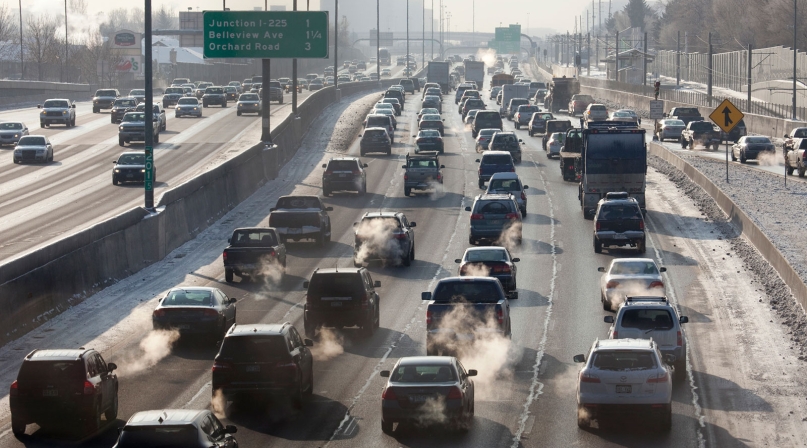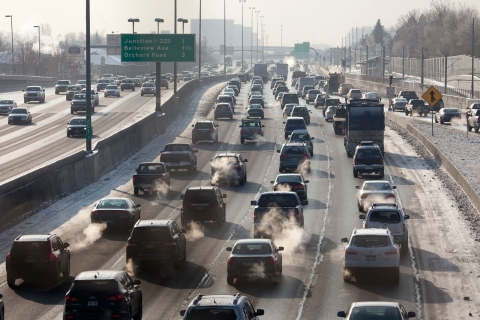EPA rolls back fuel efficiency standards
Upcoming Events
Related News

Key Takeaways
On March 31, the U.S. Environmental Protection Agency (EPA) and the National Highway Traffic Safety Administration finalized a new rule that would direct automakers to improve vehicle fuel efficiency by 1.5 percent per year through the model year 2026. The Safer Affordable Fuel Efficient (SAFE) Vehicles rule rolls back the Obama Administration’s regulation that required the auto industry to improve fuel efficiency by five percent. The announcement came one day before the April 1 deadline to set fuel economy targets for the 2022 model year.
The future of the SAFE Vehicles is uncertain as the rule is expected to be tied up in the federal court system for months. Compounding the future uncertainty for the new fuel efficiency standards is ongoing litigation between California and the Trump Administration.
California planned to move ahead with the stronger emissions standards by requesting a waiver from the federal government. The Clean Air Act permits California – and only California – to request permission to adopt and enforce its own vehicle emissions standards.
In 2019, the Trump Administration revoked California’s waiver request sparking litigation. Depending on the court’s decision, California and twelve states (Connecticut, Delaware, Maine, Maryland, Massachusetts, New Jersey, New York, Oregon, Pennsylvania, Rhode Island, Vermont and Washington) plus the District of Columbia could have tighter fuel emissions standards, causing the U.S. to be split into two vehicle markets, causing concern for automakers.
Among our numerous responsibilities, environmental stewardship is a primary function of county governments to ensure healthy, safe and vibrant communities for our residents. As both regulators and regulated entities, counties are responsible for protecting local air, water and land resources through delegated authority for state and federal laws, such as the Clean Air Act. Counties are concerned with the final rule as we urge the federal government to set stricter standards to help reduce motor vehicle emission levels across the United States (pg. 59 American County Platform).

Attachments
Related News

House Natural Resources Committee advances the Endangered Species Act Amendments Act of 2025
On December 17, the House Natural Resources Committee advanced the Endangered Species Act (ESA) Amendments Act of 2025 (H.R. 1897). The version passed by the committee adopted several changes from the initial bill and would address key county concerns by improving the implementation of the ESA. The legislation now awaits a floor vote before the whole U.S. House of Representatives.

Counties and Railroads: Shared Priorities for the Next Surface Transportation Bill
County leaders from across the country have a vital opportunity to ensure their infrastructure priorities are front and center.

Senators introduce bipartisan UPGRADE Act to support small and rural public water systems
On December 15, Sens. Lisa Blunt Rochester (D-Del.) and Roger Wicker (R-Miss.) introduced the Unincorporated Partnerships for Grant Resources, Assistance, and Drinking Water Enhancements (UPGRADE) Act (S. 3465), a bipartisan bill that would strengthen federal support for small public water systems and helps unincorporated communities access clean and affordable water.